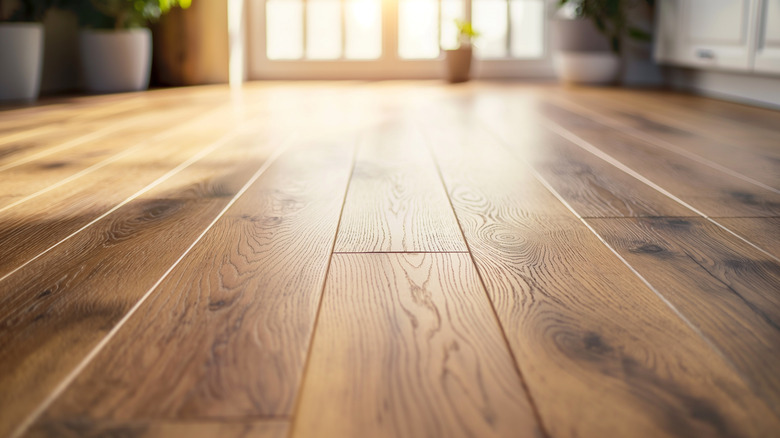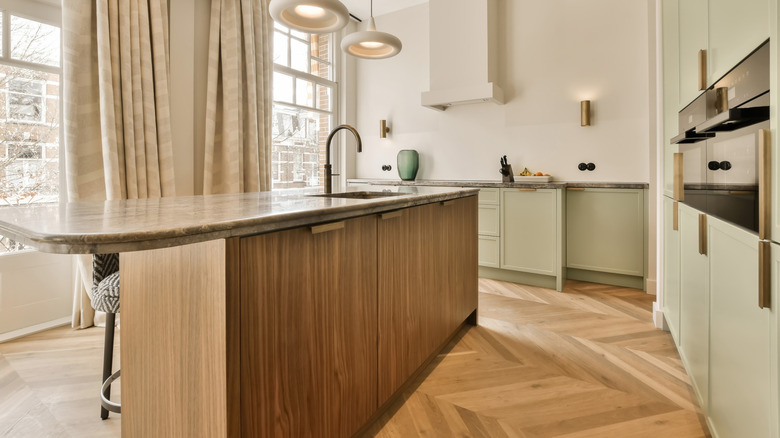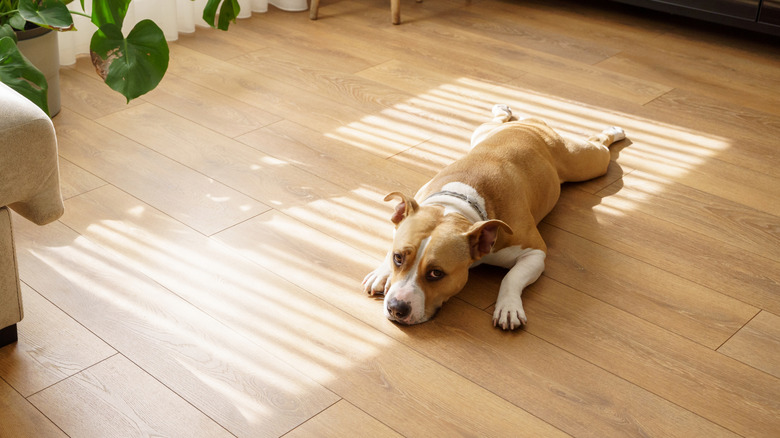Tile That Looks Like Wood Vs Actual Hardwood: Which Is Better For Your Home?
Hardwood flooring can add natural beauty and warmth to your home. It's the ideal choice for some rooms. However, it's not the best option where it could be exposed to moisture or where it would be subject to excessive wear and potential damage. If you like the appearance of natural wood, but you're concerned hardwood floors are a high-maintenance nightmare, then vinyl flooring is one option. Unfortunately, it can be prone to the same wear and damage issues as hardwood. A better alternative is wood-look tile. It can be equally attractive, less expensive, and hard-wearing, so it's definitely something that deserves a closer look.
Wood-look tiles are typically made of either porcelain or ceramic. Modern manufacturing processes mean the surface can accurately mimic real wood in terms of both grain and color, whether that's rich, warm tones or a stripped, bleached look. Further, if you think all tiles are standard squares, think again. Wood-look tiles come in a variety of shapes including traditional planks.
Why wood-look tile could be a better choice than hardwood
Although there are downsides to tile floors you'll want to consider, it is a far more durable material than hardwood and more resistant to day-to-day wear and tear. Tile can be fitted in kitchens, bathrooms, and laundry rooms, where hardwood isn't practical. Tile won't scratch or stain, so it's virtually maintenance-free. Even when hardwood is well looked after, it will still need periodic refinishing. Wood-look tile can be a convenient solution for many homes, but it will be particularly attractive for busy families.
Porcelain is extremely tolerant of climate fluctuations, so it can be used for both conservatories and patios, providing a smooth transition from inside to outside. Although hardwoods can be used outdoors, once again, there's ongoing maintenance to consider. There are also claims that wood-look tiles are a more sustainable product than hardwood floors. However, that's quite a complex issue. Some hardwoods are grown and harvested with full focus on environmental considerations. If you are going to install a hardwood floor, check that the wood bears the Forestry Stewardship Council (FSC) mark for responsibly managed timber.
Tile can have a couple of drawbacks
Cost is a major factor, and the actual tile or hardwood chosen will have a big impact on the price. Although in many cases it will be cheaper to buy tiles than hardwood flooring, it could be more expensive to install the tile. You could take on the task yourself, and there are some must-know tips for perfect tile installation that will help. However, it takes a lot of skill to cut porcelain properly, so working with it may be beyond the average DIYer's skills. Ceramic tiles, then again, are easier to install.
Some experts feel that real hardwood can increase the resale value of your home, but wood-look tile does not. You'll have to balance that against the practicalities. There's also an undeniable physical warmth to wood that tile can't match. Whether that's important will depend on where you use the flooring and where you live. For example, few people want to get out of bed and step on a cold floor. On the other hand, cool tiles can be a positive pleasure on a scorching hot day. As is usually the case, no flooring is ideal in every situation. Nevertheless, wood-look tile offers plenty more than just its visual appeal.


